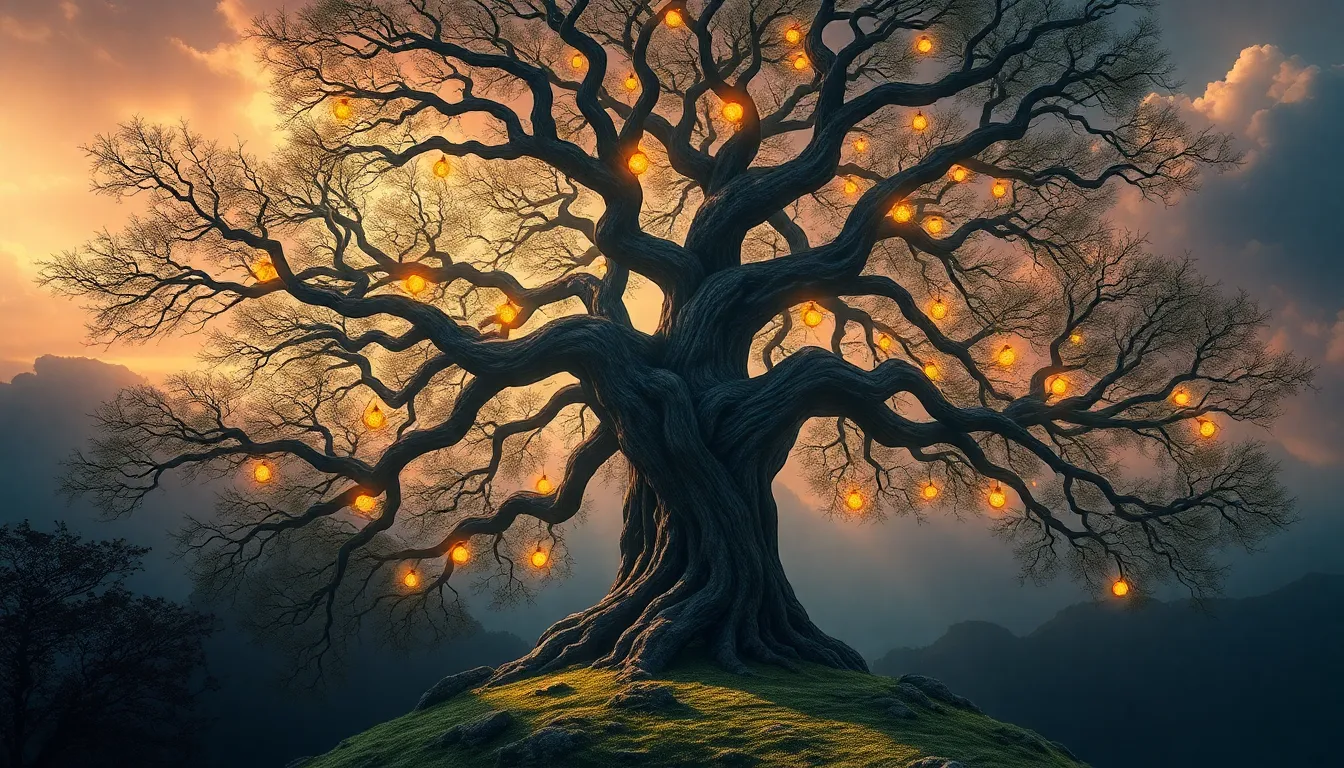The Tree of Wishes: Myths of Hope and Dreams
1. Introduction to the Tree of Wishes
The Tree of Wishes is a fascinating concept that transcends cultural boundaries, symbolizing hope, dreams, and the innate human desire for betterment. In various cultures, this tree stands as a metaphorical embodiment of aspirations, where individuals can leave their dreams or wishes, hoping they will one day come true. This article aims to explore the historical origins, cultural significance, and modern interpretations of the Tree of Wishes, delving into its role in folklore, literature, and contemporary society.
2. Historical Origins of the Tree of Wishes
The notion of a tree that grants wishes has deep roots in ancient myths and legends. Many cultures throughout history have depicted trees as sacred entities, believed to connect the earthly realm with the divine. For instance:
- The Norse Yggdrasil: This immense ash tree is central to Norse cosmology, linking the nine worlds. It symbolizes life, growth, and the interconnectedness of all beings.
- The Bodhi Tree: In Buddhism, this tree is where Siddhartha Gautama attained enlightenment. It represents the ultimate wish for liberation from suffering.
- The Wish Tree in Japanese Culture: Known as “Tanzaku,” people write their wishes on small strips of paper and hang them on bamboo branches during the Tanabata festival.
These examples illustrate how the Tree of Wishes has been interpreted in various societies, often symbolizing the hopes and dreams of individuals and communities.
3. The Tree of Wishes in Folklore and Literature
Folklore is rich with tales of the Tree of Wishes, where characters often embark on journeys to fulfill their deepest desires. Notable stories include:
- The Wishing Tree: A popular folktale where a tree grants wishes to those who treat it kindly, teaching lessons about respect and gratitude.
- The Giving Tree by Shel Silverstein: This beloved children’s book illustrates the selflessness of giving and the bittersweet nature of unfulfilled wishes.
These narratives not only entertain but also provide profound insights into human nature and the significance of our aspirations. The representation of wish-making in literature often reflects societal values and the complexities of desire.
4. Symbolism of the Tree in Different Cultures
The symbolism of the tree as a harbinger of hope and dreams varies significantly between cultures. In Eastern cultures, trees are often seen as life-givers, embodying spiritual growth and enlightenment. In contrast, Western cultures may view trees as symbols of strength and endurance. Key comparisons include:
- Eastern Interpretations: Trees are often associated with harmony, balance, and connection to nature, representing the path to inner peace and fulfillment.
- Western Interpretations: Trees symbolize resilience and the ability to weather storms, often representing personal growth through challenges.
This duality highlights the universal yet culturally specific nature of the Tree of Wishes, emphasizing its role as a symbol of aspiration and hope across the globe.
5. The Role of Nature in Wish Fulfillment
Nature plays a crucial role in the belief in the Tree of Wishes, as it serves as a backdrop for human desires. The natural world is often seen as a source of inspiration and a conduit for spiritual communication. Factors influencing this belief include:
- Natural Beauty: The aesthetic appeal of trees and their environment often evokes feelings of peace and contemplation, fostering an atmosphere conducive to wish-making.
- Seasonal Changes: The cycles of nature, including growth and decay, mirror the human experience of hope, dreams, and aspirations.
This connection between natural elements and human desire emphasizes the profound impact of the environment on our beliefs and practices surrounding the Tree of Wishes.
6. Modern Adaptations and Interpretations
In contemporary society, the Tree of Wishes has taken on new forms and meanings. From community art installations to social media campaigns, the concept continues to evolve. Examples include:
- Community Wish Trees: Public installations where individuals can write and hang their wishes, fostering a sense of community and shared hope.
- Social Media: Platforms where users share their dreams and aspirations, creating virtual trees of wishes through hashtags and campaigns.
These modern adaptations show how the Tree of Wishes remains relevant, reflecting current societal values and the collective yearning for hope and connection.
7. Psychological Perspectives on Wishes and Dreams
The act of wishing and dreaming holds significant psychological value. It can serve as a coping mechanism, allowing individuals to envision a better future. Key points include:
- Hope as a Psychological Construct: Hope is linked to resilience, motivation, and overall well-being, playing a crucial role in mental health.
- Wishing as a Form of Expression: Making wishes can help individuals articulate their desires, leading to greater self-awareness and emotional processing.
Understanding the psychological significance of wishes sheds light on why the Tree of Wishes continues to resonate with people across generations.
8. The Tree of Wishes in Popular Culture
The Tree of Wishes has permeated popular culture, influencing movies, music, and art. Notable representations include:
- Films: Movies often depict trees as magical entities, such as in The Secret Life of Trees, which highlights their wisdom and connection to human emotions.
- Music: Songs that reference trees often symbolize growth and change, resonating with themes of hope and aspiration.
These cultural representations shape societal views on hope, reinforcing the importance of dreams and aspirations in our lives.
9. Personal Stories and Testimonials
Personal experiences related to the Tree of Wishes reveal its transformative power. Many individuals recount moments when they made a wish, only to see it fulfilled in unexpected ways. Common themes include:
- Connection: Individuals often feel a deep connection to the tree, viewing it as a confidant for their hopes.
- Transformation: Many report significant changes in their lives after engaging with the Tree of Wishes, attributing their growth to the act of wishing.
These testimonials underscore the enduring impact of hope and dreams on personal journeys.
10. Conclusion: The Enduring Legacy of the Tree of Wishes
In conclusion, the Tree of Wishes represents a timeless symbol of hope, dreams, and the human spirit’s resilience. From its historical origins to its modern interpretations, this concept continues to inspire individuals and communities alike. The importance of wishing and dreaming transcends cultural boundaries, reminding us of the power of hope in shaping our lives and futures. As we continue to navigate the complexities of life, the Tree of Wishes remains a beacon of possibility, encouraging us to aspire and believe in our dreams.



